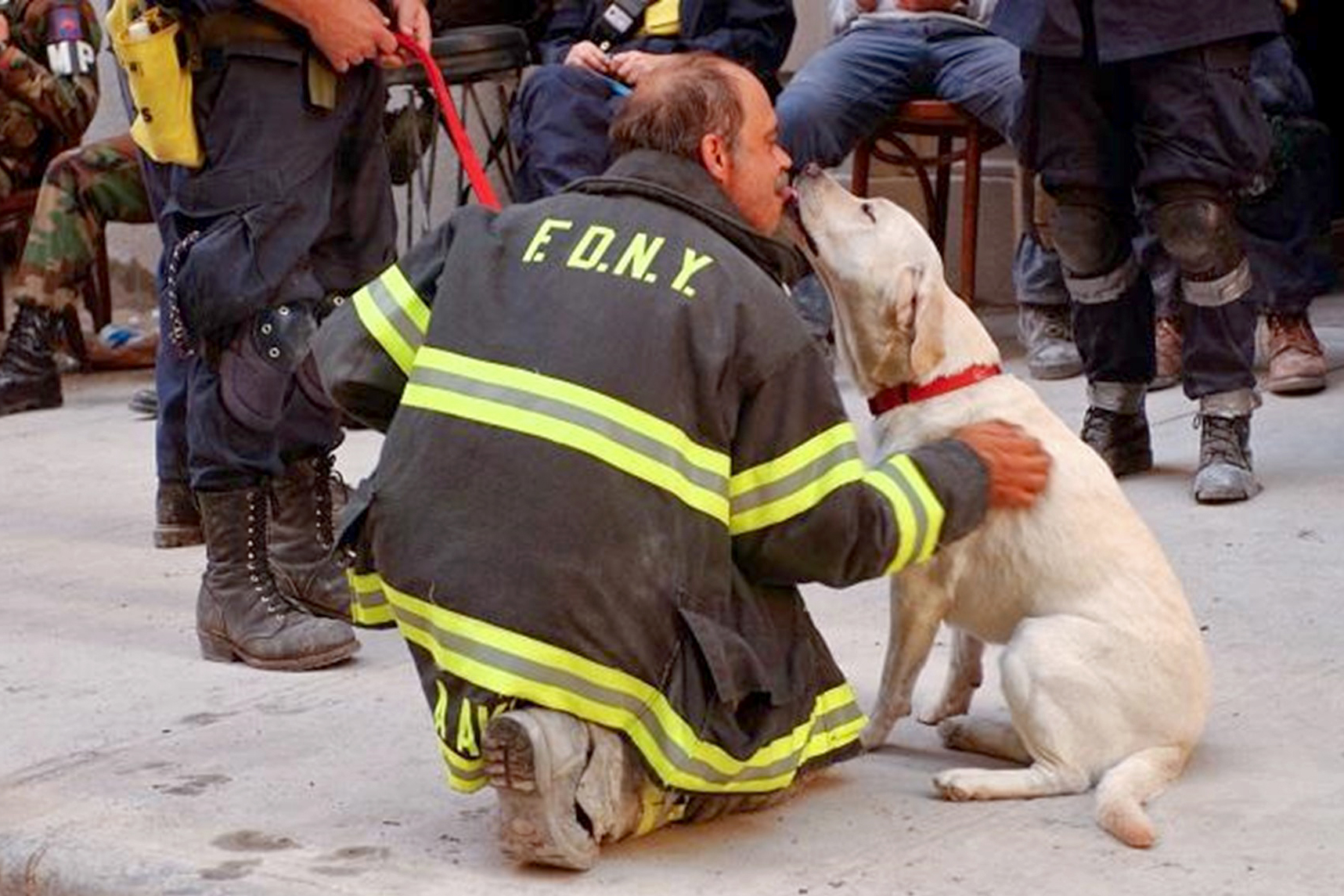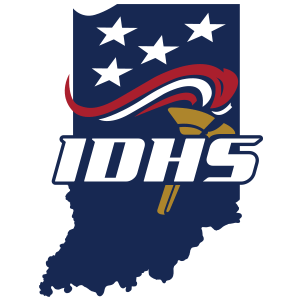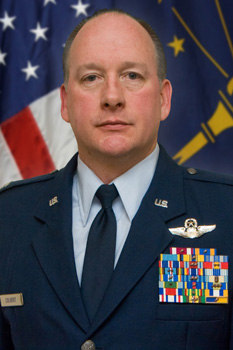
9/11 Message From the State Fire Marshal
9/11 Message From the State Fire Marshal
The stories collected here are only a few of the many Indiana first responders who experienced the 9/11 terrorist attacks. IDHS salutes all the countless other Hoosiers who contributed in a variety of ways during and after the attacks but whose stories were unable to be included here.
It has been more than two decades since the 9/11 terrorist attacks on the United States, but their impact continues to be felt. Almost 3,000 people were killed, including 400 first responders who were on scene in New York City. Thousands more responders and survivors have developed 9/11-related cancer and other illnesses, adding to the number of line-of-duty deaths.
The Indiana Department of Homeland Security shares the following stories of Hoosiers who played important roles responding to the events of that time and those who experienced it back home.
Hoosier First Responders on 9/11
Search and Rescue Teams

Hoosier K-9 Scout comforts a firefighter near Ground Zero.
An estimated 300–350 K-9s performed search, rescue and recovery efforts, with about 30 working at the Pentagon and the rest at Ground Zero in New York City. Lillian Hardy, current IDHS search and rescue manager, did not go to the sites of the terrorist attacks, but she was the regional representative for the National Association of Search and Rescue (NASAR) at the time. She fielded phone calls and helped get teams connected to agencies and supplies that were being donated to the appropriate people.
"I was on the phone and computer all day," she said, mentioning that inquiries about the dogs stayed steady for about a month with people wanting to get info on how the K-9s were doing and how to make donations of money, dog paw coverings and medical supplies.
Several of the K-9s that went were from Indiana, including Kaiser, Max and Thor (handlers Tony and Annette Zintsmaster), Scout (handler Blake Wallis) and Polly (handler Marti Vanada). Most K-9 teams rotated on 12-hour shifts, were assigned to designated areas around the site and were examined and decontaminated by a veterinarian after working. Most of the K-9s were with Indiana Task Force One and arrived in New York City on Sept. 12.
Polly worked 7 a.m. to 7 p.m. the first day, and she was upbeat early on in the efforts but became sad as the days went on without finding survivors. Still, she lifted the spirits of weary firefighters just by being there and with her ever-present Frisbee flying disc. K-9 Kaiser worked the night shift
and on his second day suffered an injury to a front paw pad. He got fixed up and went back to work. He often boosted spirits when he played with other rescue workers and kept them company.
Source: "Dog Heroes of September 11th" by Nona Kilgore Bauer
Although it was tough on the K-9 teams not finding many survivors, Hardy noted it was still important for them to be there.
"It was a combination of going and finding people and giving a good, comforting effect to responders and people still holding up hope for their loved ones," she said.
Seven Gary Fire Department firefighters from the Rescue Squad Company 2 responded and arrived in New York City the evening of September 13, stayed for nine days and worked many hours in the pile at Ground Zero. A 2011 article in the New York Daily News reported how the team worked 12-hour shifts, mostly at night, and how one of the firefighters returned about a year later to become a New York Fire Department firefighter.
Timeline: National September 11 Memorial & Museum
Joseph Jamrock was one of the Gary firefighters:
On September 11, 2001, I had just gotten of my shift with the Gary Indiana Fire Department Engine Company 2, as this day is also my birthday. As I watched the news and saw the first tower fall, I knew at that moment I had to go and help, as a few of us on Gary knew some New York firefighters personally. Five of the crew I work with gathered up things and headed down to Ground Zero. As we arrived, we were put right to work helping with search and rescue. We spent a week helping.
Compelled to Help
Kenneth Burson was a firefighter at the Fort Wayne Fire Department on 9/11:
We were doing our “spring” cleaning that day. I was outside doing maintenance duties, when the PA came on telling all personnel to report to the dayroom. The duty captain had seen on the news that the World Trade Center was on fire after a reported “small” aircraft had struck one of the buildings. As one of only four truck companies in the city at that time, he started asking us about our responsibilities if this had been our city. In other words, he was making a training opportunity out of this. We all watched as the second plane hit the south tower. We all wondered what kind of sick movie this was, and it dawned on us that this was real.
I had just spoken to my best friend in Boston (at the time), who is as close to me as my own brother, just the week before. He was telling me about his promotion at work, and how he would be leading a team in California for a few weeks. As the news info started to catch up that day, and started announcing that some of the flights had originated out of Boston Logan Airport, I got very scared. I tried calling him, but half of the U.S. was all trying to call loved ones, so the phones were down. That evening, as we watched the news, a ticker across the bottom of the screen provided info for assistance requests for help in NYC. I called one of the numbers and was told that I could come to Javits Convention Center to help in the efforts.
The following morning, my brother and I left for New York City because I was fearful that my best friend was on one of those flights. On the way, I finally was able to contact him, but after the conversation, my brother and I decided that we were committed to the trip anyway to help out as much as we would be allowed to, even if it was just passing out food and supplies. My brother spent the days there working at Javits unloading trucks of supplies and organizing the materials for redistribution to Ground Zero. I was immediately placed in charge of a small strike team to assist in rescue and recovery efforts. We both spent several days working until FEMA arrived and was able to better organize the incident. At that point we returned home.
Uncertainty
As with many emergencies, information about what was happening when the attacks began was limited, and it was unclear what was occurring or what would come.
Felicity Morgan was in her second year as a career firefighter with Wayne Township Fire Department:
I had come in early for my shift that day to work out, but a run dropped, so I went ahead and relieved the person coming off shift and took the run. It was an EMS run, and we transported. On the way back, everything I heard on the radio was talk. I wanted music so I turned it off. As soon as we pulled back into the bay, the rest of the crew came out to meet us and ushered us into the dayroom to watch the news. We saw the replay of the first plane hitting, and shortly afterward saw the second plane hit on live news.
The rest of the day was surreal. The sky was quiet. At the time we were a combination department, and volunteers kept showing up till we were fully staffed. Even though it was not a busy day with runs, it seemed busy. Everyone was on edge. We were waiting for what would come next.
Sean Harper was working for Tippecanoe County EMS part-time and full-time for Franklin Fire Department, and his twin brother was a Plainfield firefighter at the time:
As I was working a stroke patient, my brother kept paging me. When I called him back, he told me about the two towers. Then as I was walking to get a patient in the hospital, I walked past radiology and they showed smoke around the Pentagon. I thought it was amazing that they could see the smoke from the World Trade Center at the Pentagon, but someone corrected me and told me that it was a truck bomb (things were crazy at first).
It was a beautiful day with minimal clouds and warm weather. Purdue is so busy with aircraft that it was strange not to see anything flying. At the end of my shift, we saw Air Force One flanked by two fighters flying east. We did not know it was Air Force One at the time. I thought it was the Urban Search and Rescue teams from California heading to the Trade Center (since no one was flying and we just did not know).
At the Ready
Larry Robb is now the EMA director for Posey County. On 9/11 he was working at a 911 dispatch facility when he first saw a report that a plane had struck the World Trade Center:
While continuing to watch, we discussed how in the 1940s a plane had hit the Empire State Building. But while continuing to watch, we saw the second plate hit the second tower, and we both understood that this was not an accident but a terrorist attack. We continued to watch as more reports came in on the final two planes. When the shift ended, I went home and talked with my family about the day, and soon after I could no longer handle watching the news, so we put a DVD in and watched a movie to help release the stress.
In the coming days (I had been a 911 dispatcher for several years and a volunteer firefighter for a long time also), I watched the recovery effort and we as a county (Posey County) discussed sending fire trucks and personnel to New York. After much discussion it was decided we would not, but would respond if asked.

